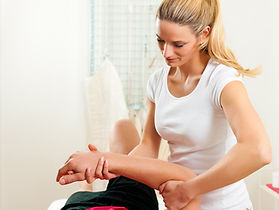Spursing it Up.com

Bone Spurs
Spursing it Up is a website made by me, a Senior Student who was curious to find more information about bone spurs. I decided to do this topic to research because I have some relations to them. I am diagnosis with a knee spur and have many neck and back problems so I researched neck spurs to see if it's a possibility if I have it. While doing research I found some really interesting information and I made this website to share my knowledge with you (the viewers). Let's get started with some simple questions that most people have about bone spurs:
What is bone spurs?
Bone spurs are tiny pointed overgrowths in the bone and can occur in cartilage or tendons. Some common locations are in the back or sole of the heel bone in the foot, around joints that weaken cartilage, and in the spine next to weak discs. They can be discovered by radiologic testings such as with X-rays, ultrasound imaging, MRI scan, CT scan, and myelograms. Bone spurs are something that tend to happen as we age.
Why do you get bone spurs?
Bone spurs can be caused by local inflammation. This inflammation activates cells that form bone to add bone in the area, which eventually leads to a bony mound or spur. A bone spur is medically referred to as an osteophyte.
What are symptoms of bone spurs?
Sometimes bone spurs don’t have any symptoms but if they do, it depends on the location. Pain, numbness, and tenderness can be related with bone spurs if they are irritating tissues that’s close by such as skin, fat pads, nerves, or tendons.
Heel spurs causes local foot pain, tenderness, and sometimes swelling. It can difficult walking because of the pain at the bottom of the foot due to weight-bearing. Inflammation of the entire bottom of the foot can arise when heel spur occurs in the bottom of the heel bone.
Spurs that are in the spine can pinch nerves next to it which can cause numbness, tingling, pain, and weakness in the part of the body that is supplied by the nerve that’s affected.
Bone spurs that doesn’t give any symptoms are incidentally detected by X-rays tests that are used for other reasonings. These kinds of spurs could’ve happened because of injuries that happened to the past with nearby tissues. This could cause local inflammation of the bone which leads to the making of the bone spur.
How do you prevent bone spurs from happening?
There’s no way to prevent bone spurs.
Treatments for bone spurs
Bone spurs can only be treated if they are causing symptoms.Treatment is towards decreasing inflammation and
avoiding causing re-injury when possible. If the bone spur is reachable, local cold application can help. Depending
on the location of the spur, anti-inflammatory medications are commonly used, administered both orally or by local
injection. Orthotics or shoe inserts, and bone spur pads can be considered. Lastly, surgical operations for
treatment is sometimes the option is the bone spurs are causing irritation to the nerves.


Below is a video that show how to treat bone spurs naturally.